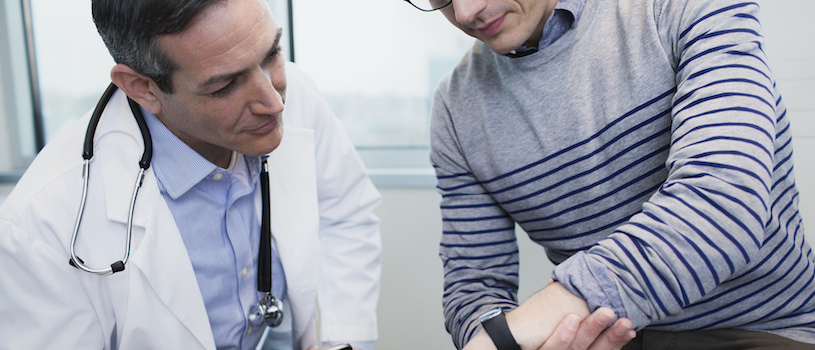The first days and weeks following surgery are critically important in determining both the success of a procedure and the total cost of care. Thus, it’s essential that doctors, caregivers and patients are able to easily communicate in order to prevent complications such as infections, and to ensure that postoperative instructions are being followed.
Fortunately, new technologies make it easier than ever for healthcare providers and patients to collect and share information regarding a patient’s recovery. Mobile remote patient monitoring solutions and wearables can help reduce hospital readmission rates by automatically collecting and transmitting patient vital signs and other medical data that can alert clinical workers to potential problems with recovery. Additionally, it’s easier for patients and healthcare providers to communicate when multiple channels are available.
Modern digital healthcare mobile apps and other remote patient monitoring solutions offer ambulatory surgery patients and their providers a number of valuable functions and services, including:
- The ability to use a mobile app for follow-up care, in lieu of in-person visits to a hospital or private practice.
- Alerts to remind post-op patients about taking medications.
- Clear and simple instructions regarding treatment plans, rest and dietary needs following surgery.
- Understanding of potential recovery complications and how to recognize them.
- Detailed physicians’ references for specific procedures.
According to a new profile of the global smart healthcare wearables market from Research N Reports, smart wrist devices are the most common patient wearables, Medgadget notes. Wearables can monitor and transmit patient vital signs, such as heart rate and glucose, as well as track activity levels. This data can be a key to reducing hospital readmission rates.
Ensure the Security of Healthcare Apps
Download the white paper for a free guide to mobile security in healthcare. Download Now
Quantifiable Benefits From Mobile Technology
The use of mobile remote patient monitoring solutions and wearables for post-op recovery is on the rise. In one case, Ascension at Home Wisconsin, a network of agencies supporting patients discharged from acute care facilities, sought to improve care by deploying a remote care management platform from Vivify Health that features Samsung Galaxy tablets and clinical monitoring services from Evolution Health. Agency home care providers use the tablets to capture and transmit key patient health data to Evolution Health, which will notify patients and contact Ascension if the data indicates a problem. By using this notification system, Ascension has improved patient care — readmission rates now are at 8 percent, roughly one-third of the U.S. average — without further burdening home care workers. In addition, the platform has enabled Ascension to add new clients and improve its reputation.
A recent clinical trial further underscores the potential of remote patient monitoring solutions in producing successful surgical outcomes and reducing costly hospital readmissions. In the July 2017 edition of JAMA Surgery, researchers from the University of Toronto reported on results of a randomized clinical trial of 65 ambulatory breast surgery patients. It was designed to determine whether follow-up care using a mobile app could reduce the need for in-person visits during the first 30 days after a breast reconstruction procedure.
Researchers concluded that women using mobile apps for post-op recovery made fewer than half as many in-person visits to a caregiver than trial participants who didn’t use a mobile app. Not surprisingly, the mobile app group also reported higher convenience scores than the women accessing follow-up care in person. Perhaps most importantly, the trial showed that using mobile apps had no negative impact on complication rates or the hospital readmission rates, according to the trial report.
Considerations for Implementation
Noting the University of Toronto’s research results, an accompanying piece in July’s JAMA Surgery urges providers to fully leverage the potential of mobile devices to transform healthcare delivery while managing costs. With the benefits, both healthcare providers and ITDMs within the space must consider potential implementation strategies and how exactly they can jointly create an infrastructure that efficiently supports both patients and staff alike.
These considerations can include what type of applications are suited best for wearables; what type of wearables a hospital may want to offer; if patients will need to provide their own devices for telehealth care; and additional security concerns that should be addressed when accessing sensitive health information in-home or off-site.
Still, using mobile remote patient monitoring apps and wearables to communicate more effectively with patients, hospitals and other healthcare providers not only can reduce the necessity of in-person follow-up care, they can reduce hospital readmission rates — the most expensive form of care. In an era when patients are paying a higher percentage of their medical costs out of pocket and federal subsidies to health insurers are in jeopardy, mobile apps and wearables will play an increasingly critical role.
Another key healthcare trend is the digital health advisor, which uses technology and healthcare interoperability to improve efficiency and encourage patients to take an active role in their health.









